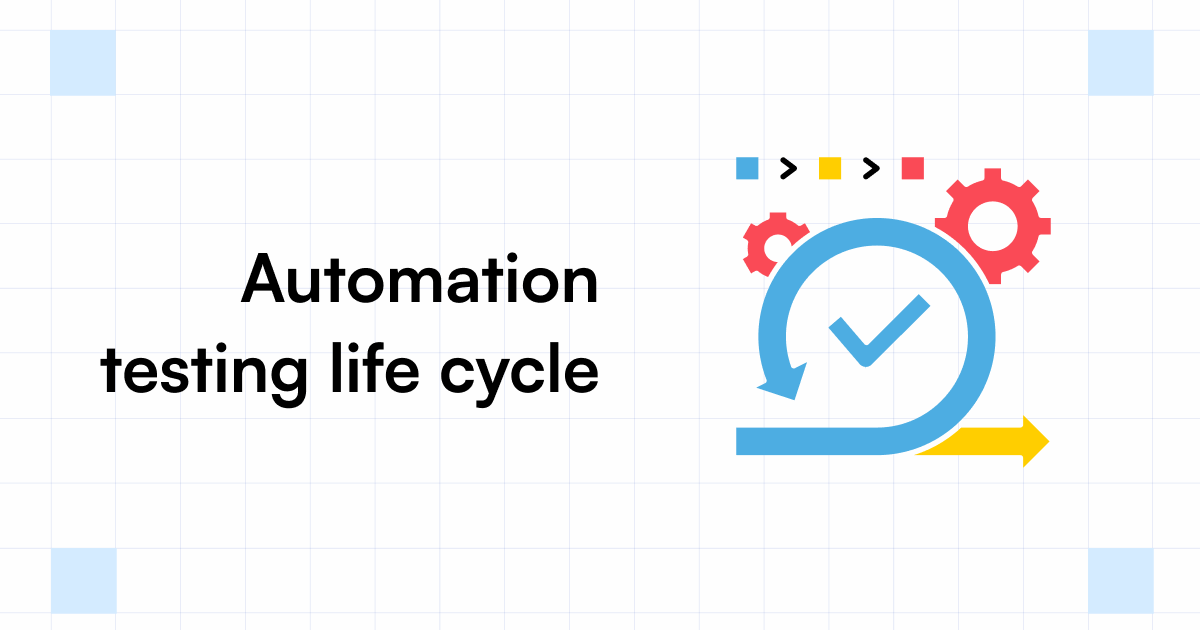Selecting the Right Devices for Effective Automation Testing Solutions
Selecting the Right Devices for Effective Automation Testing Solutions
Blog Article
Ensuring Success in Automation Examining: Trick Metrics, Obstacles, and Solutions Every QA Team Must Know
In the realm of software program high quality guarantee, the landscape of automation screening is ever-evolving, requiring a meticulous strategy to make sure seamless procedures. The trip to understanding automation testing is led with subtleties that call for an eager eye for tracking, evaluation, and constant renovation. As the industry propels onward, the pursuit for optimal performance in automation screening stays a consistent pursuit, advising QA groups to outfit themselves with the understanding and techniques crucial for triumph.
Relevance of Secret Metrics
Understanding the importance of key metrics is essential for assessing the performance and efficiency of automation testing procedures. Key metrics serve as measurable steps that give important understandings right into various aspects of the testing process, such as test insurance coverage, examination execution time, problem thickness, and test situation effectiveness. By evaluating these metrics, QA teams can identify traffic jams, inadequacies, and locations for renovation within their automation testing framework.
One essential aspect of essential metrics is their ability to track progression and keep track of the general health of the screening procedure (automation testing). They make it possible for stakeholders to make enlightened choices based upon data-driven insights, which can bring about extra reliable screening approaches and much better resource allowance. Additionally, crucial metrics can help groups established realistic goals, determine the success of automation efforts, and demonstrate the ROI of automation screening initiatives

Usual Obstacles Encountered
Obstacles commonly run into in automation screening procedures can considerably influence the overall performance and efficiency of QA teams. One of the major difficulties is the selection of the appropriate test situations for automation. Not all test situations appropriate for automation, and picking the wrong ones can lead to lost time and sources. In addition, preserving test scripts can be a daunting task, particularly as the application goes through regular adjustments. Examination script upkeep requires continuous updates and alterations to ensure they mirror the present capability properly. Another common obstacle is the preliminary investment needed for establishing automation structures and devices. This can be a barrier for some companies, particularly smaller ones with minimal budgets. Furthermore, automation screening might not cover all facets of screening, such as use and user experience screening, which still require hand-operated intervention. Getting rid of these difficulties calls for proper planning, calculated examination case option, durable upkeep processes, appropriate resources, and a clear understanding of the limitations of automation testing.
Effective Solutions for Challenges
To address the challenges run into in automation testing, applying efficient remedies is crucial for enhancing the performance and performance of QA teams. One vital solution is to invest in robust training programs sites for QA groups to guarantee they have the required skills to effectively make use of automation tools. Training can bridge expertise voids, enhance understanding of automation frameworks, and improve scripting capacities, ultimately bring about extra reliable examination development and execution.
Another crucial option is to establish clear communication channels within the QA group and with various other stakeholders, such as developers and task supervisors. Reliable communication helps in straightening expectations, sharing progress updates, and immediately resolving issues or obstructions that might develop throughout the automation screening procedure.

Tracking and Analysis Techniques
Applying effective surveillance and analysis methods is important for guaranteeing the success and efficiency of automation testing processes. In addition, examining examination results and metrics provides beneficial insights right into the top quality of the software program being checked and the efficiency of the screening technique.
One trick strategy in surveillance and analysis is the usage of control panels that consolidate pertinent metrics and KPIs in a visually easily accessible format. These dashboards supply an extensive review of examination implementation status, test insurance coverage, problem fads, and other web link essential information. Consistently evaluating and evaluating these dashboards can help QA groups make informed decisions, prioritize tasks, and maximize screening initiatives.
Additionally, carrying out automated alerts and notifications based on predefined thresholds can boost proactive surveillance and timely treatment. By setting up alerts for efficiency discrepancies or examination failings, groups can resolve issues promptly and avoid them from intensifying. Generally, surveillance and evaluation techniques play a vital role in guaranteeing the effectiveness and success of automation screening efforts.
Continuous Improvement Strategies
Enhancing the effectiveness of automation screening procedures necessitates the consistent refinement of strategies and methods. Continual improvement strategies are critical for QA teams to adjust to progressing innovations and deliver top notch software. One crucial method to improving automation screening processes is to carry out normal evaluations and retrospectives. By examining past screening sites cycles, groups can recognize traffic jams, inadequacies, and locations for enhancement. Applying comments loops and including lessons discovered right into future testing frameworks can yield considerable renovations gradually.

Conclusion
To conclude, it is vital for QA teams to recognize the key metrics, obstacles, and remedies in automation screening to guarantee success. By carefully checking and analyzing information, applying reliable solutions to usual challenges, and continually boosting strategies, QA teams can optimize their screening processes and supply top notch software items. Following these techniques will inevitably lead to more reliable and reliable automation screening practices.
By analyzing these metrics, QA groups can identify bottlenecks, ineffectiveness, and locations for renovation within their automation testing structure.
In addition, crucial metrics can aid teams established reasonable objectives, gauge the success of automation initiatives, and demonstrate the ROI of automation testing efforts.
Obstacles typically come across in automation screening procedures can significantly affect the general effectiveness and efficiency of QA teams. Automation testing might not cover all facets of screening, such as usability and customer experience screening, which still call for manual intervention.In conclusion, it is vital for QA groups to recognize the key metrics, difficulties, and solutions in automation testing to make sure success.
Report this page